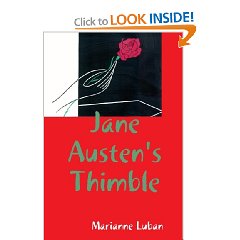In her inscription at the Middle Egyptian shrine called the Speos Artemidos in Greek, Hatshepsut had something to say about people living at the Delta city of Avaris. Her assertions have been the source of some controversy, both linguistic and historical. Right from the outset of the section where she refers to the Hyksos, Sir Alan Gardiner chose to begin the phrase with the word “Dr”, which he translated as meaning “since” in this case. [Egyptian Grammar, page 131, where he supplies the entire phrase: “Dr wn aAmw m-qAb-n TA-mHw Hwt-wart”, rendering it “since the Asiatics were in Avaris of Lower Egypt”.] After that comes “SmAw m-qAb=sn”. Because the determinative of the plural noun “SmAw” is a man holding a stick with a bundle on his shoulder, it is clear that “wanderers” are meant, they being "in the midst of" the “aAmw”.
The Aamu have been attested and depicted since the 12th Dynasty, notably in the famous tomb of the official Khnumhotep II at Beni Hasan in Middle Egypt, where they are shown bringing him eye paint. [The Speos Artemidos is only 2 kms south of this tomb.] They are dressed in what might easily be described as “coats of many colors” and have features not normally assigned to Egyptians in the art. Their leader has the Semitic name of Abisha [ibSA]. He is given the title of "HqA XAst" or "Ruler of a foreign land". Much later in Egyptian history Kamose, a Theban prince, characterizes the Aamu as being his enemy at Avaris, on whom he planned to make war.
Whether the aAmw were a certain people, a clan, or just any nomadic group from Asia is uncertain. What is more certain is that the grapheme /A/ still had the value of an agent that created a syllabic sound “ar” or “ra” in the time of the 12th Dynasty and that what Egyptologists write as an unpronounceable “Aamu” should really be transcribed “Aramu”. The first glyph, /a/, represented perhaps an “ayin”--or however the Egyptians vocalized it. It may be that, since the “Aramu” represented a folk, they continued to be known by their 12th Dynasty vocalization indefinitely. Even some ordinary Egyptian words retained the “old pronunciation” of /A/ even unto the Late Period as attested by Coptic. When the father of Moses was said to have been “a wandering Aramean” in the Hebrew Bible, it probably did not mean that he was a vagabond from Syria [Aram] as the family of the prophet was said to have lived in Egypt since the time of Joseph. More than likely, Amram was part of the Aramu of Northern Egypt, who could also be found elsewhere in the land depending upon the political climate.
By the era of Hatshepsut, the Aramu had been coming in and going out of Egypt for a long time.. The successor of Kamose, another Theban named Ahmose, supposedly drove them out of the country to a place called Sharuhen—not very far at all. After a protracted siege of Sharuhen, obviously a fortification, the fate of the Hyksos there remains uncertain as Ahmose was said to have turned his attention to the Nubian rebels. Thutmose III mentions Sharuhen in the text describing his initial Asiatic campaign in his first year of sole rule but, unfortunately, the writing was damaged and it is unclear what Sharuhen had to do with anything.
Next comes “Hr sxn irytw”, a declaration which I take to mean that the ones of Avaris were “continually” in the habit of doing damage to the established, whether that be in the form of something constructed like a temple or shrine or the rituals performed therein. Or perhaps they had been even more destructive than that. After that in the Speos Artemidos text comes what Gardiner rendered as “they ruled without Ra and he acted not by divine command down to my august self.” Nobody could scrupulously claim that the 15th Dynasty Hyksos kings had ruled without Ra. Whatever their actual religious preferences, their prenomina were replete with references to the sun-god. Regardless, a fragment of a story recounting old battles between the North and the South, claimed that Apophis, the Hyksos ruler, had “no other god but Sutekh”. Whether true or false, it seems rather clear that Sutekh/Baal was the chief deity of the eastern Delta—as witnessed by the Ramessid-era “Stela of the 400 Years”, depicting him in his Canaanite incarnation.
As Hans Goedicke rightly points out in his book about the Speos Artemidos inscription, “nfryt r” is the manner of saying “down to” in Middle Egyptian—and not “nfryt xr” as the text has it. This probably amounts to a scribal error because the next sign following “xr” in the inscription is “Hm” and scribes were accustomed to writing phrases like “xr Hm n nsw bity” or “under the majesty of the one of the Insibia”.
Goedicke also asks the question, “...why should Hatshepsut some 70 years after the establishing of the Theban hegemony in Egypt be concerned with them?” [the Hyksos] Indeed why? Since the mention of the Asiatics and Hatshepsut's expulsion of “the abomination of the gods”, erasing their very footprints, comes at the end of the inscription, perhaps it was all meant to lead up to this act, viewed as quite a coup by the woman-king. But is she really taking credit for something occurring in the eastern Delta, whether or not the one really responsible may have been her father, her husband, or even her junior partner, Thutmose III, whose name is on some of the pillars of the portico? The narrative of the ethnic cleansing is executed in fancy punning language but the inscription does not bear a helpful date. Regardless, Hatshepsut appears to be declaring herself to be a pharaoh who is not burdened with or threatened by any "godless rulers" in the city of Avaris at the time of the creation of the shrine.
The term “m-qAb=sn” when employed in reference to the “SmAw” vis a vis the “aAmw” appears to mean a more familiar alien people having “in their midst” some others who had wandered in at some unspecified time. Were they by chance some Minoans displaced by the Theran disaster, remnants of whose frescoes could be seen at Avaris even in modern times? It is umpossible to say now.








1 comment:
Very interesting and erudite!
Post a Comment